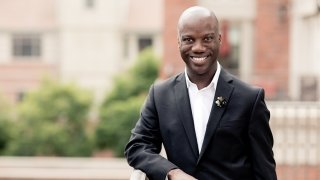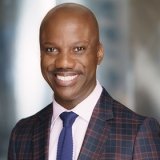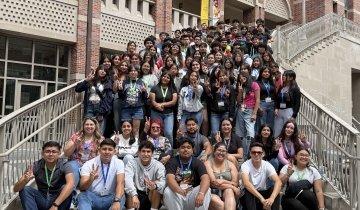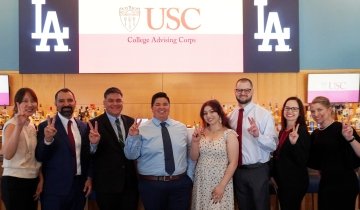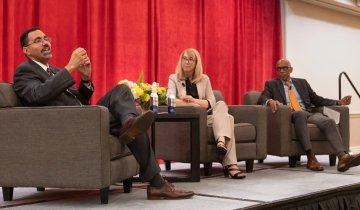Shaun R. Harper, executive director of the new USC Race and Equity Center, longs for the day when the growing recitation of hashtags like #Charleston or #Charlottesville will give way to an ever-trending #DoingRacialEquity.
“Our center is the place that educational institutions call when they need guidance and evidence-based advice in moments of racial crisis,” he said in August after returning from the University of Virginia. He had spoken to the entire faculty and staff one week after a march by white supremacists left one counter-protester dead and 19 injured.
“But I would rather institutions call us preemptively in order to take more preventive measures as opposed to restorative or corrective actions,” he said.
Harper was the founding executive director of the University of Pennsylvania’s Center for the Study of Race and Equity in Education, which he ran from 2011 through the spring of 2017. He moved to USC in July 2017 to establish and direct the USC Race and Equity Center and to become the Clifford and Betty Allen Professor in Urban Leadership. The move is a homecoming for Harper, who was executive director of the USC Rossier EdD program from 2003 to 2005.
When he asked the Virginia audience if they were appalled by white supremacy on campus, Harper wasn’t referring to the marchers carrying tiki torches. He was talking about the far more common and overlooked forms of racism that go unchallenged every day on predominantly white college campuses all over the nation.
“Campus chief executives, including those who are people of color, join white nationalists in preserving and exacerbating white supremacy when they neglect to name and boldly counter racism,” wrote Harper and the center’s chief strategy officer, Charles Davis III PhD, in a joint op-ed that ran in the Los Angeles Times the morning after the UVA march.
Harper and his colleagues are frequently invited to visit college campuses throughout the year to conduct climate assessments and leadership training. Two weeks before fall classes started, Harper drove 50 miles north of USC’s University Park Campus to deliver a presentation to the entire faculty and staff at Moorpark College, a community college nestled in the hills of Ventura County. While 50 percent of its 14,000 students are white, its Latino enrollment is a solid 33 percent; but black students make up less than 2 percent of the student body.
He told his audience that to practice racial equity, they needed to be reflective and honest.
“You have to be reflective about your own role not only in giving voice to the importance of equity and diversity and inclusion,” he said, “but also to be honest with yourself about the role you might play as educational leaders either in making equity possible or in stifling it.”
Collaborate. Be opportunistic, not problematic. Confront prior socialization and implicit biases. That’s Harper’s message.
BEING HONEST WITH DATA
One of the center’s first studies will take a close look at suspension and expulsion rates of black and Latino students at all California public high schools. It builds on his work from 2015, when he was co-author of a study of the suspension and expulsion rates of black students at more than 3,000 high schools in 13 southern U.S. states.
While blacks were only 24 percent of students enrolled in public schools in those states, they were 48 percent of the students suspended and 49 percent of the students expelled.
“The goal of our California suspension report is to make inequities transparent and to learn from high schools where black and Latino students are not disproportionately overrepresented in school discipline cases,” he notes.
Data also sets up another fundamental truth: Doing racial equity is about collaboration and collective ownership. Seventy-nine percent of full-time faculty members at colleges and universities across the country are white; and 87 percent of college and university presidents are white.
“For far too long, when we talk about race and equity, somehow we default to putting the burden on people of color,” he says. “White people absolutely have to be involved meaningfully in major leadership capacities in achieving racial equity.”
Visits to campuses like Moorpark sometimes end with discussions of high-accountability plans for racializing the college’s curriculum or devising campus-wide conversations on race.
The hope is to act now rather than to wait for a crisis. Ironically, the visit to Moorpark took place on the same day as the white supremacist march in Charlottesville. Harper didn’t know it yet, but by the following Friday he would be making a presentation at the University of Virginia. He accepts that, for the foreseeable future, his center’s work will be in high demand.

